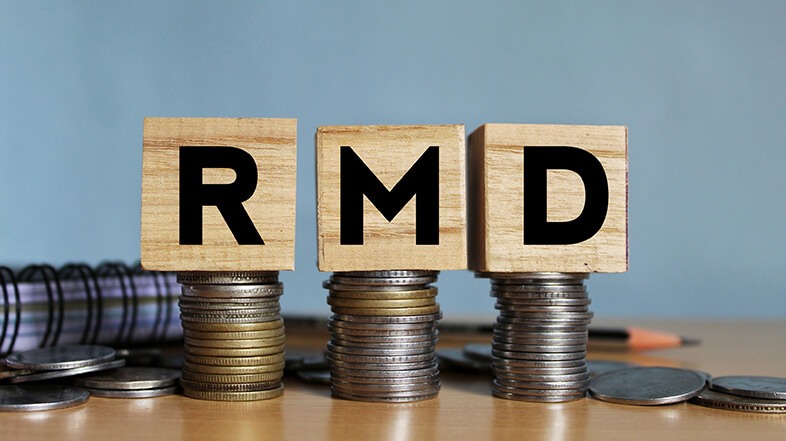April 24, 2023
The more you know your rights as a 401(k) investor, the better choices you will be able to make building wealth for retirement.
But far too many 401(k) investors don’t know their rights due to the lack of education.
Most of us sign up for a 401(k) plan and are handed a packet of information filled with industry jargon. Very little is explained by the plan representative or HR department.
If this sounds familiar – and you are ready to get engaged with your 401(k) – then keep reading to understand your rights as a 401(k) investor.
Access to Information

You have the right to receive information about your 401(k) plan and its investments, including performance data, fees and expenses, and the investment strategies being used.
In addition, your plan administrator must provide you with an annual report that includes information about the plan’s investments, expenses, and performance, as well as quarterly statements.
Knowing how to read and understand the information presented in a 401(k) statement may be critical to your retirement future.
But, let’s face it – there’s a lot in them and they can be difficult to understand.
Watch the video below to see how to read your 401(k) statement.
You Are Responsible for Your 401(k)

Far too many 401(k) investors think their employers take care of their 401(k)s for them.
This is not true. They cannot and will not make changes for you.
It’s your money. It’s your account. It’s up to you to make changes.
This also means that, should you leave a 401(k) behind with your old employer when you switch jobs, they are not staying on top of your 401(k). It’s your responsibility to roll over your 401(k) – whether it be to an IRA or to your new 401(k) plan.
[Related Read: How Much Is Your Forgotten 401(k) Costing You in Potential Savings?]
Control over Investment Choices

You have the right to choose how your 401(k) contributions are invested, within the options provided by the plan.
Typically, when you enroll in a 401(k) plan, you are given a menu of investment options to choose from, and you can decide how much of your contributions you want to allocate to each investment option.
You also have the right to make changes to your investment choices over time.
For example, if you decide that you want to take on more risk in your portfolio, you can shift some of your investments from bond funds to stock funds.
Or, if you become more risk-averse as you get closer to retirement, you can move some of your investments into more conservative options, such as stable value funds or money market funds.
It’s important to note that there may be limits on how often you can make changes to your investments. Some 401(k) plans limit the number of changes you can make per year, while others may charge a fee for making frequent changes.
To stay on track to meet your retirement goals, we recommend rebalancing your account throughout the year.
[Related Read: What Every Investor Needs to Know about Rebalancing]
Employers Can Automatically Enroll You in TDFs

Your employer can automatically enroll you in (i.e., 2030, 2040 funds) as their default option or Qualified Default Investment Alternatives (QDIAs).
They can legally do this thanks to the Pension Protection Act of 2016, which enabled employers to direct plan participants’ assets into a target date fund and not be liable–should the employee not select an investment.
Average investors are advised to invest in target date, or lifestyle, funds because they are supposed to automatically adjust account allocations throughout life.
The problem is that investors are grouped solely based on their expected retirement date.
TDFs don’t take into account your profession, salary, risk tolerance, or retirement goals and objectives. Nor do they take into consideration changes in economic and market trends or tax or trade policy.
As a result, TDFs often underperform in good markets and do a poor job of managing downside risk during tough markets.
Watch 3 Ways Target Date Funds May Hurt 401(k) Investors
Employer Match Roth Option

Thanks to the Secure Act 2.0, which was passed into law December 29, 2022, employers can now match the Roth option in 401(k)s.
Prior to this law, employer matches had to be made with pretax dollars, go into your traditional 401(k), and then you’d have to pay taxes on the money when you withdrew it later on.
This is optional for employers, and employers may elect to make pretax matches or not provide a company match at all.
[Related Read: SECURE Act 2.0: How It Affects Your Retirement Savings]
Company Match Dollars May Not Be Yours to Keep

Vesting is your legal right to keep what your employer contributes as a company match.
Each employer has its own requirements for vesting.
No matter what, once you become fully vested, the money is yours to keep.
So, should you change jobs after you are fully vested, you don’t have to return part or all of the money your company matched.
Your vesting schedule should be clearly spelled out in the information packet provided when you signed up. If you don’t see it, make sure to ask your plan representative or HR department.
[Related Read: Changing Jobs? Know Your Vesting Schedule before Quitting]
You Can Contribute Up to $22,500 in 2023

Employees with 401(k)s, 403(b)s, most 457 plans, and federal Thrift Savings Plans can contribute up to $22,500 in 2023.
For those age 50 and older, the 401(k) catch-up contribution is $7,500 in 2023. This means you can contribute a total of $30,000 this year if you’re over 50.
Protected from Bankruptcy

Typically, 401(k)s are considered exempt from bankruptcy under the Employee Retirement Income Security Act (ERISA).
This means creditors won’t have access to your 401(k) when you liquidate assets in Chapter 7 bankruptcy, and it won’t be considered an asset when your payment plan is determined under Chapter 13.
However, there are some situations where your 401(k) funds may be at risk should you have to file for bankruptcy.
You Can Borrow from Your 401(k)

Should you need money for an emergency or for a down payment on a home, you can take out a 401(k) loan.
But do so with caution.
Should you take out a loan and then be terminated or you voluntarily quit, you will have to pay back the 401(k) loan in full – and potentially in significantly less time than you’d planned.
If you cannot repay the loan balance in the mandated time frame, the loan will be treated as an early withdrawal, or taxable distribution. And you have until the due date of your tax return for the year of distribution to pay it back.
Should this happen, in addition to having to pay the 10% early withdrawal penalty if you are under age 59½, you’ll also owe income taxes on the full balance of the loan.
[Related Read: The Downside of 401(k) Loans: Investors Beware]
You Can Withdraw from Your 401(k)

As with the 401(k) loan, this option should be your last resort. However, it is your right to pull money from your 401(k).
You can do it, but not without consequences.
First things first: If you withdraw money from your 401(k) before age 59½, you will have to pay income tax on the amount you withdraw plus a 10% early withdrawal penalty.
Unless you qualify for a hardship withdrawal, which is defined by the IRS as taking money out of your 401(k) because of an immediate financial need that’s limited to the amount to satisfy the hardship need – not the amount you want.
The need of the employee also covers the employee’s spouse or dependents.
With a 401(k) hardship withdrawal, you pull money from your savings, and you cannot pay it back like you do a 401(k) loan.
If you qualify, you will still have to pay taxes as ordinary income on the money withdrawn, but you won’t have to pay the 10% early withdrawal penalty.
[Related Read: The High Cost of Raiding Your 401(k)]
You Must Take RMDs at Age 73

Thanks to the Secure Act 2.0, required minimum distribution (RMD) changes will be phased in over the next 10 years.
RMDs will now start at age 73, starting in 2023. If you have already started RMDs, this will not change for you.
If you turn 72 in 2023, you can take your first RMD by December 31, 2024, or you could delay it to April 1, 2025. If you delay until April, you will need to take two RMDs in 2025. One for 2024, and one for 2025.
Starting in 2033, or phase 2, the RMDs move up to age 75.
Also included in the bill are massive changes to the original 50% penalty for not taking Required Minimum Distributions on time:
- The hefty 50% penalty for not taking RMDs will drop to 25% in 2023.
- The penalty drops to 10% if you take the required amount by the end of the second year that it was due. The penalty could be waived completely if you didn’t take the RMD due to an unforeseen event (like illness), but then withdrew it as soon as you could. You would have to ask the IRS for a penalty waiver.
You Have a Right to Professional Account Management

Professional 401(k) management help has been shown to increase 401(k) investors’ returns.
In a 2019 study titled Advisor’s Alpha, The Vanguard Fund Group, Inc., reported a 3% average increase in the value of portfolios of clients who have their accounts professionally managed.¹
Aon Hewitt and Financial Engines conducted a study from 2006 to 2012 comparing the returns of investors who sought help in the form of online sources or managed accounts to those who managed their 401(k)s themselves.
The study examined the 401(k) investing behavior of 723,000 workers at 14 large U.S. employers. It showed that investors who received professionally managed help earned higher median annual returns than those who invested alone.
In fact, participants who had their assets managed by professionals saw an average of 3.32% (net of fees) more in returns annually than those who managed their own accounts.²
The study revealed, “If two participants—one using Help and one not using Help—both invest $10,000 at age 45, assuming both participants receive the median returns identified in the report, the Help participant could have 79 percent more wealth at age 65 ($58,700) than the Non-Help participant ($32,800).”³
To see how 3% may improve your 401(k) performance, check out our retirement Calculator.
401(k) Maneuver provides professional account management to help you grow and protect your 401(k) account.
Our goal is to increase your account performance over time, manage downside risk to minimize losses, and reduce fees that harm your account performance.
Our done-for-you, virtual service allows you to keep your 401(k) right where it is while we review and rebalance your account based on your risk tolerance and current market conditions.
[embedded content]
Book a complimentary 15-minute 401(k) Strategy Session with one of our advisors today.
Sources:















